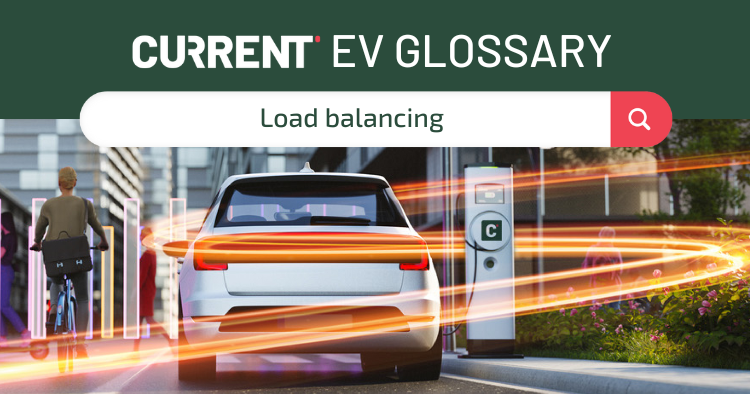OCPP
OCPP: What You Need To Know
Electric vehicle adoption is growing rapidly and the charging infrastructure is catching up, this means the standardization of this technology is more important than ever. With clear standards in place, we can ensure the interoperability of hardware and software in the future.
The Open Charge Point Protocol (OCPP) is a set of standards that were created to enable this compatibility. It allows for communication between electric vehicle chargers and the charge point management system. This protocol enables smart charging of EVs and brings numerous benefits to charge point manufacturers and operators, as well as energy companies, facility managers, and end-users.
What is OCPP?
The Open Charge Point Protocol (OCPP) is a standardised way for a charger to talk to your back office or charge point management system. It has multiple modules — meaning different types of functionality — and different versions.
Åsmund Møll Frengstad, COO of CURRENT Eco explains it like this: “OCPP is a bit like English. Lots of people claim to speak it, but it sounds very different. You have different dialects in the UK and Australia and New Zealand and America – it’s all English but it's different. OCPP ensures we can all understand one another.
“Making sure that everybody is speaking the language properly simplifies everything because the main purpose of this protocol is to support the rollout of EVs. If the central system can communicate with all the different charges in the same way, it's much simpler.”
WHY DO WE NEED OCPP?
- Interoperability: OCPP standardises the communication between charging systems and charging stations. This enables different charging systems from different suppliers to work together seamlessly. Without such a standard, charging operators would be locked into a particular vendor, limiting their choice and flexibility.
- Remote management: OCPP gives charging operators the ability to manage their charging stations remotely. This involves remote software updates, real-time monitoring of charging sessions, and troubleshooting. This reduces operational costs and provides better service to EV drivers.
- Security: The protocol includes security features such as authentication and encryption, which protect communication between charging operators and charging stations. This is important to prevent unauthorised access and ensure the integrity of charging systems.
- Scalability: OCPP provides a robust platform for charging infrastructure expansion. Operators can easily add more charging stations and integrate them into existing systems using the standard protocol.
- Openness: As an open standard, OCPP is available to all players in the EV industry. This promotes competition and innovation, which in turn contributes to faster development and improvement of charging systems.
How Does OCPP Work?
Open Charge Point Protocol, creates a common language that enables interoperability between devices. With input from certified users and partners, the standard is constantly evolving across the different versions, becoming more powerful each time. Version 1.6 is the most widely used, while version 2.0.1 is the latest update.
OCPP 1.6
- Builds on OCPP 1.5
- Both SOAP and JSON versions
- Smart charging supports load balancing and the use of charging profiles
- Access control with (local) RFID tags
- Additional status
- Message requests such as charging time or status of the charging session.
- Some minor improvements in the specifications
OCPP 2.0.1
- Advanced management features to configure and monitor a charging station
- Improved transaction management
- More security tools
- New features for smart charging
- Support for ISO 15118
- Display and messaging support
These standards are constantly being updated to provide more support and functionality. Take a look at the latest OCPP release here.
Who Invented OCPP?
It all started in 2009 when the E-Laad Foundation decided to create a standard for Dutch charging stations and management systems to communicate with one another. E-Laad, Greenlots, and ESB went on to form the Open Charge Alliance, which now promotes the OCPP standard worldwide.
Is OCPP Open Source?
Yes. This open-source standard allows EV chargers and management companies to freely communicate with one another. The reason the protocol is open source is that this allows for greater flexibility and the lack of barriers to adoption increases use as we move to a more standardized way of working.
Is OCPP Mandatory?
In many tenders it is mandatory but it’s not part of legislation yet. For example, in 2019 the UK made the use of smart charging standards (OCPP or other protocols) mandatory for new charge points. However, it’s not mandatory everywhere, although it’s highly recommended that all manufacturers make their devices OCPP compliant in order to future-proof the technology and usher in a new era of smart EV charging.
The reason some governments, such as in the UK, are making these standards mandatory is that it offers greater flexibility in the future. By ensuring this interoperability, fewer devices will be obsolete and it offers more chances for businesses using OCPP to enter the market.
What Is The Difference Between OCPP and OCPI?
Where OCPP is a protocol used to communicate between charging software and devices, OCPI stands for open charge point interface. This allows for a connection between charge point operators and service providers. For example, OCPI facilitates the automated roaming of EV drivers across different charging networks, making the infrastructure more accessible for all.
Why is OCPP used?
OCPP is used to allow communication between hardware and charging management software. Manufacturers and software providers use these standards to increase the compatibility of their products.
The standard also gives third parties access to relevant information set by the charge point operator. For example, this could offer insight into maintenance needs, enable more straightforward billing, or make it easier to display standardized messages to customers on the charge point interface.
What Happens When OCPP Isn’t Used?
When OCPP isn’t used, compatibility between hardware and software isn’t guaranteed. This could mean that a charge point owner may want to upgrade their charge point management system to allow for smart charging, for example, only to find that the hardware won’t properly communicate with their chosen software solution.
Even in instances where the charge point and management system do work together, it’s likely there will be issues as well as a lack of more advanced features.
What is OCPP Compliance?
An OCPP-compliant product meets the standards of the Open Charge Point Protocol as set out by the Open Charge Alliance. Complying with these standards means both hardware and software will be compatible, improving interoperability for charging infrastructure.
For example, if we look at the latest OCPP 2.0.1 release, this includes billing, security, and management features. For any charge point operator to make use of these tools, they need to ensure both the charging management software and the charging device are OCPP compliant.
It’s not enough to comply with a single functionality, however. Frengstad explains: “Unfortunately, some believe that if you can do one of the functionalities, you are OCPP compliant, but you should have multiple ones. And to be able to do, for example, smart charging and vehicle-to-grid, you need to have all these different functionalities.”
What are the benefits of the OCPP standards?
There are numerous benefits to using OCPP, including:
- Simplifies the roll-out of EVs and charging infrastructure
- Increases support for chargers
- Enables smart charging and V2X
- More visibility into problems
- Future-proofs hardware
- Increases interoperability
- Encourages innovation
“With an OCPP charger, you more or less can do anything as long as this functionality and logic is implemented,” says Frengstad.
This is the key benefit of using this standard – it increases the functionality of the technology and pushes for further innovations. As the technology is open source, the more people that use it, the better it will become — something that will benefit any business using it.
How does CURRENT use OCPP?
At CURRENT, we believe in OCPP and use it throughout what we do from the way our platform is built to how it speaks to the hardware.
“Our charge point management system is directly connected to the charger,” says Frengstad, “and we communicate with it through the OCPP. Once we get new hardware, we certify it so we know what it can and cannot do. The limitation comes down to what charger you have. There are a lot of chargers claiming to be OCPP compliant, but it all comes down to what functionality the charger has.
“Our technology allows us to control the charge point directly and we can adjust the amount of energy going to that particular asset at a given time. We can have rules deciding how this is locked and how energy is delivered. To be able to do that, you need a proper charger that is actually built by the standards following the rules and compliances set by the government.”
Further information here: Why Choose OCPP?



